A sea that is stranger than death
Far fields that a rose never blew in,
Wan waste where the winds lack breath;
Waste endless and boundless and flowerless
But of marsh-blossoms fruitless as free
Where earth lies exhausted, as powerless
To strive with the sea.”
So begins Victorian wild bunch poet Algernon Charles Swinburne’s epic (as in it goes on a bit) “By the North Sea”, which is written about Dunwich supposedly.
We’ve been back from Suffolk over a week now, but there was one more blog to write. This is with regard to the lost city of Dunwich. Once one of the biggest towns in England and a foremost port, it fell into decline (and the sea) after the peak of its success in the middle ages. It all happened when the first of a succession of storms in 1286 blocked the natural harbour of Dunwich with shingle, meaning the prosperous town was cut off from it’s trade routes across the North Sea. It never recovered.
Now it’s a pretty little village perched on the natural cliff face, population of just less than 200.
There is a great little museum there with some discovered artefacts from the deep, but the main draw for me was going for a walk along with cliff face, along the boundary wall of the Greyfriars priory. How long this old ruin will hold out against coastal erosion, who knows, but it is breathtaking and quite unsettling. There is one grave from a long gone church (All Saints) still holding on against the relentless coastal erosion.
Here is a pic of All Saints (taken from this website) through the ages. Considering this was one of the many churches of Dunwich considerably inland in the middle ages, many other churches having been lost hundreds of years before, it makes you think how transient the coastline is.
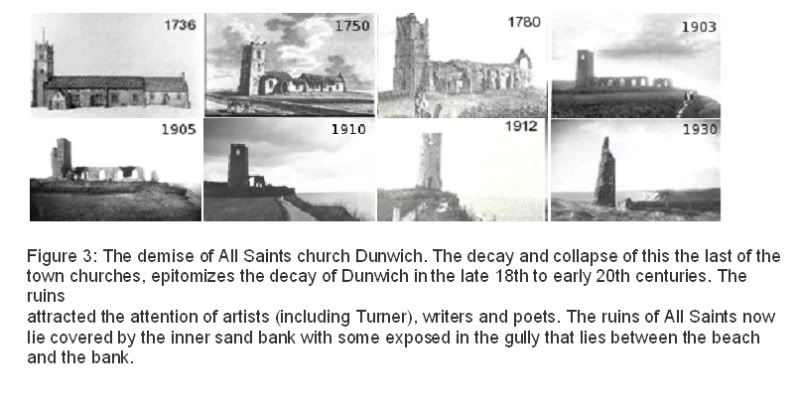
And the grave? Well, residing in it is a chap called Jacob Forster. Only a few yards beyond this gravestone is the sheer cliff face, the shingle beach and the North sea. Soon he’ll be gone too.
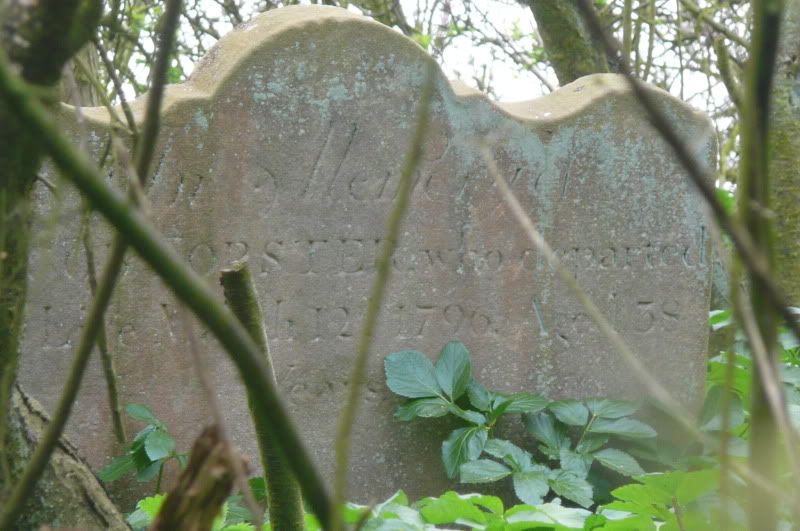
The inscription says - IN MEMORY OF JACOB FORSTER WHO DEPARTED THIS LIFE MARCH 12TH 1796 AGED 58 YEARS.
The priory now looks like this. This is with my back to the priory wall and the cliff behind that.
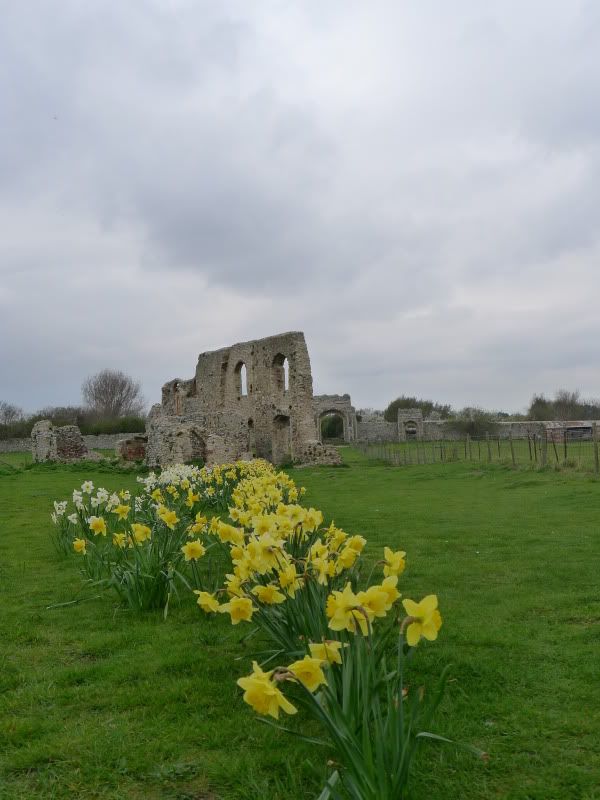
And the view from the cliffs is as follows, back in Roman times, the coast was a good half mile out from this point. You can just about see a couple of people fishing by the shoreline.
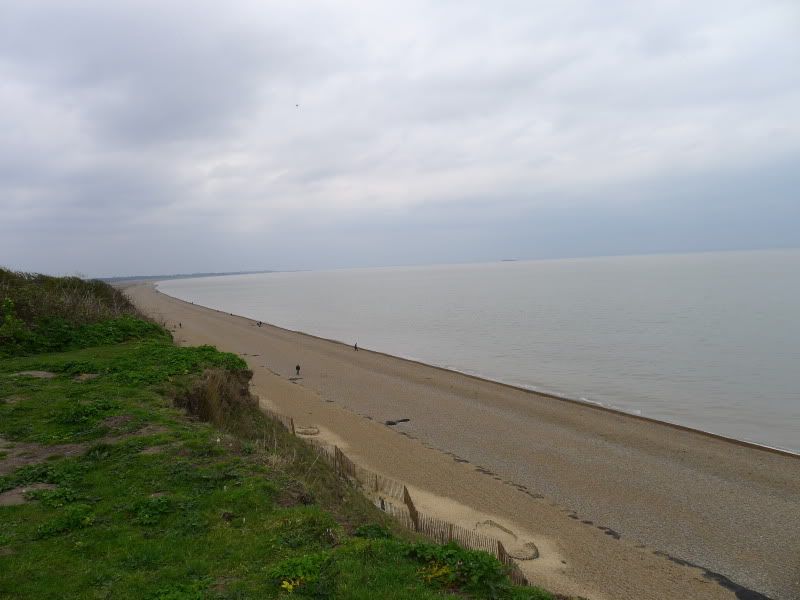
We wandered down through the village where the cliff flattens down to the beach.
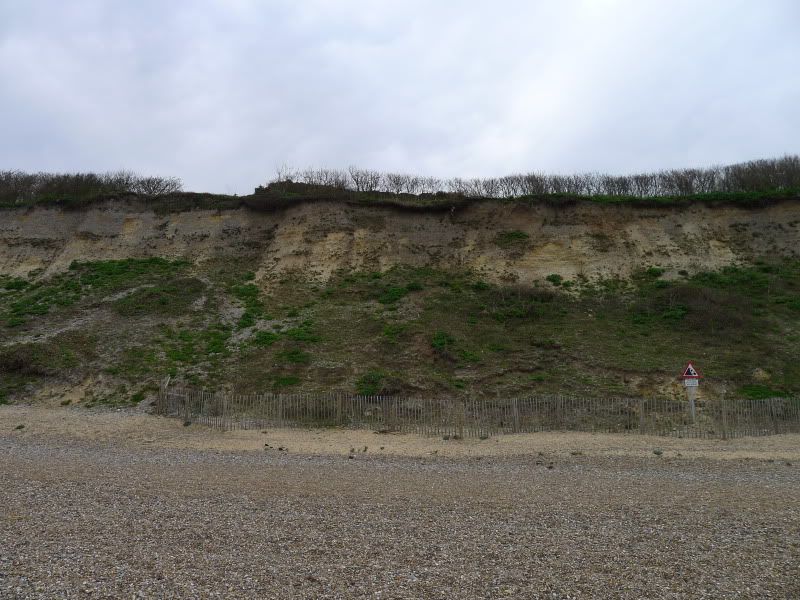
When I was skimming stones down on the beach it didn’t really register that I was probably treading on what once was consecrated land, the cemetary of All Saints Church or that my stones were flinging out on old property and houses lost in the muddy waters of the sea. In recent times, when another slice of cliff crumbles down to the beach, human remains still tumble into the open air.
On getting back to our holiday rental, of course I considered this and my unknowing disrespect for the dead. My fears were amplified in the big scary house and shit myself. The Fog by John Carpenter came into mind and for some reason Michael Jackson’s thriller video.
I then did some research on scary legends of the area and I have to say they are awesome. *Adopts old sea dog accent* On some nights you can hear the bells of the old sunken churches over the waves at night.
Or the most chilling, the Dark Heart of Dunwich. Scary Link.
This one stuck with me a bit. It also made me think about HP Lovecraft’s “The Dunwich Horror” which is actually set in America, but he probably named the town after reading both Swinburne’s poem and a novella “The Terror (1917)” by the Horror writer (much loved by Stephen King) Arthur Machen, which was also set in the English Dunwich. I’ve stuck it on my wishlist :)
As for modern day Dunwich, it is a gorgeous little English village, nothing horrific to report, apart from the price of an ice cream in the beach side cafe (£1.75!) ffs!
No comments:
Post a Comment